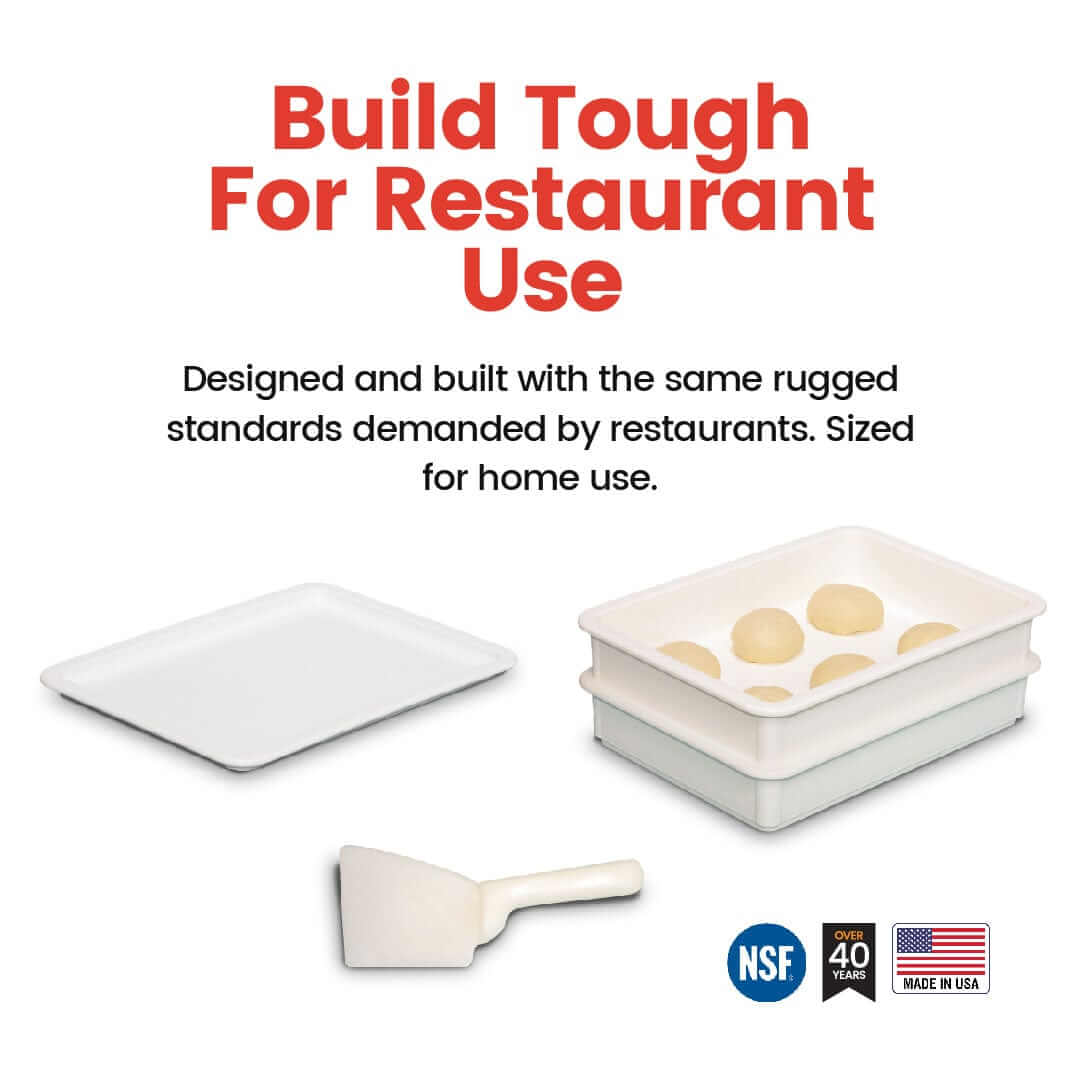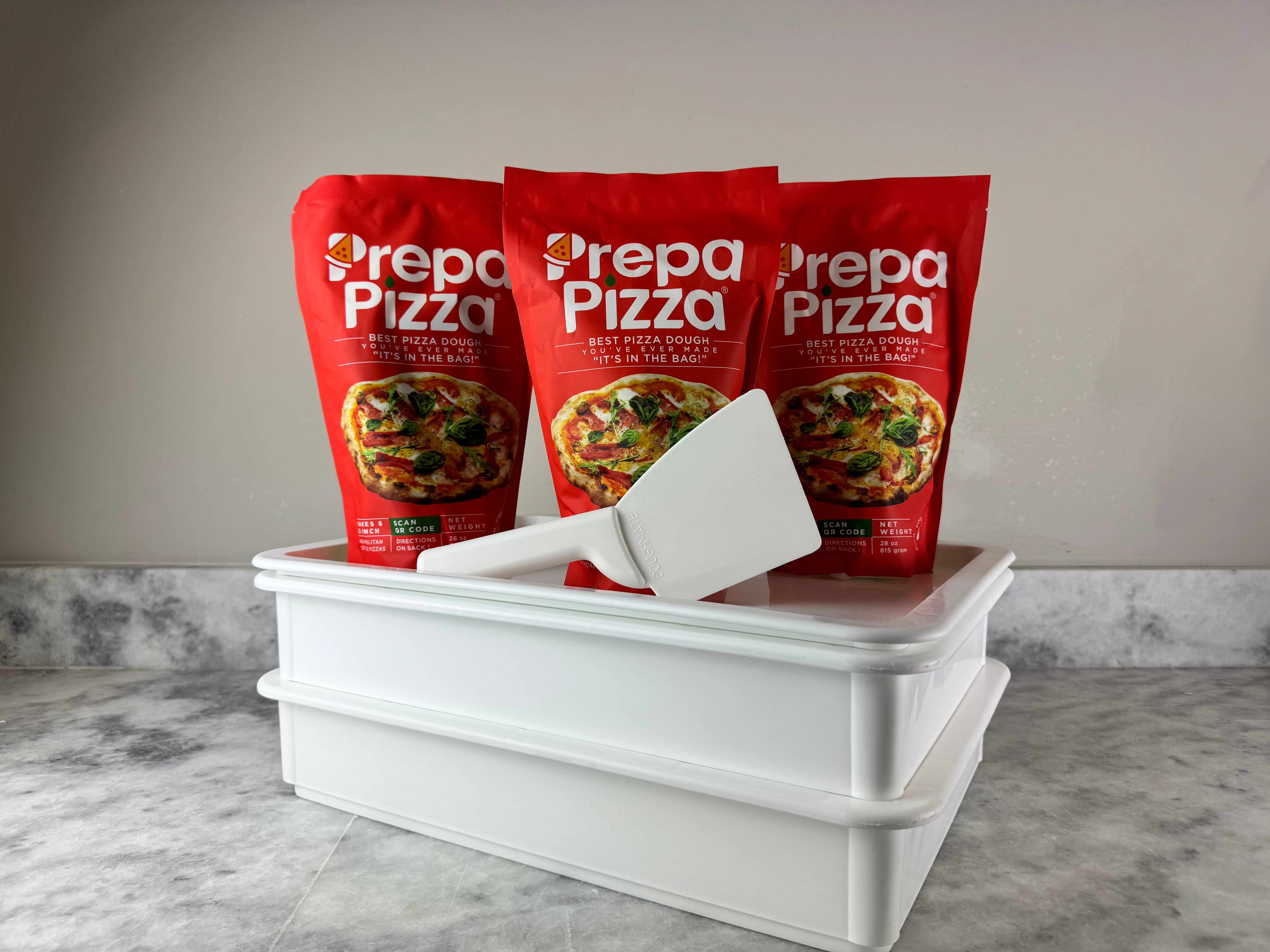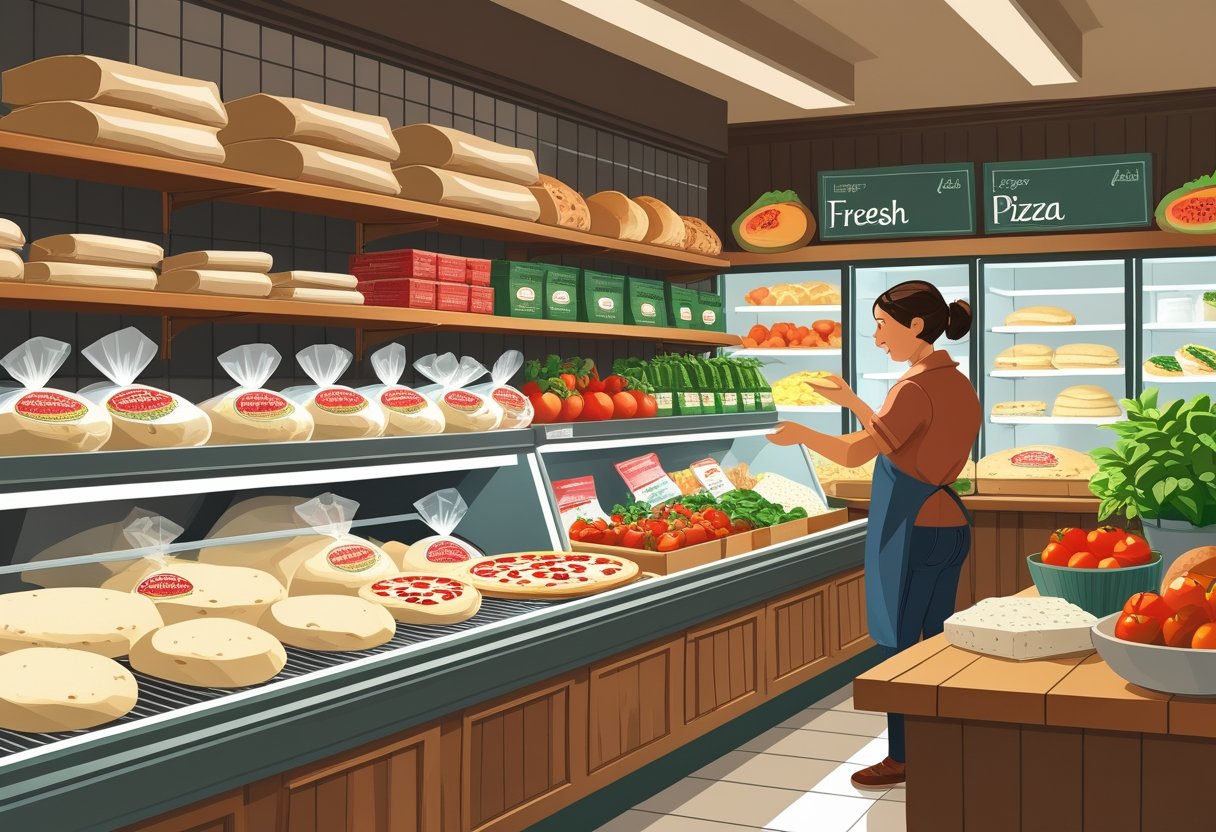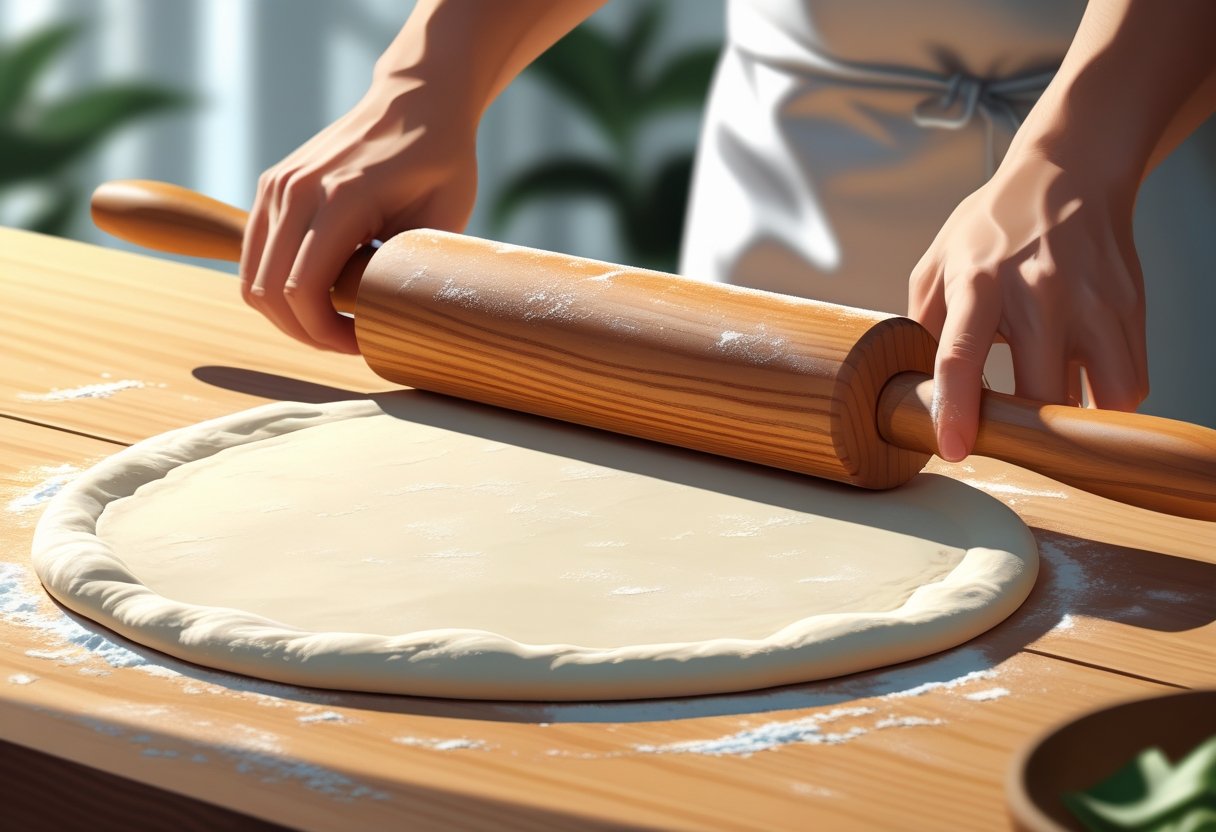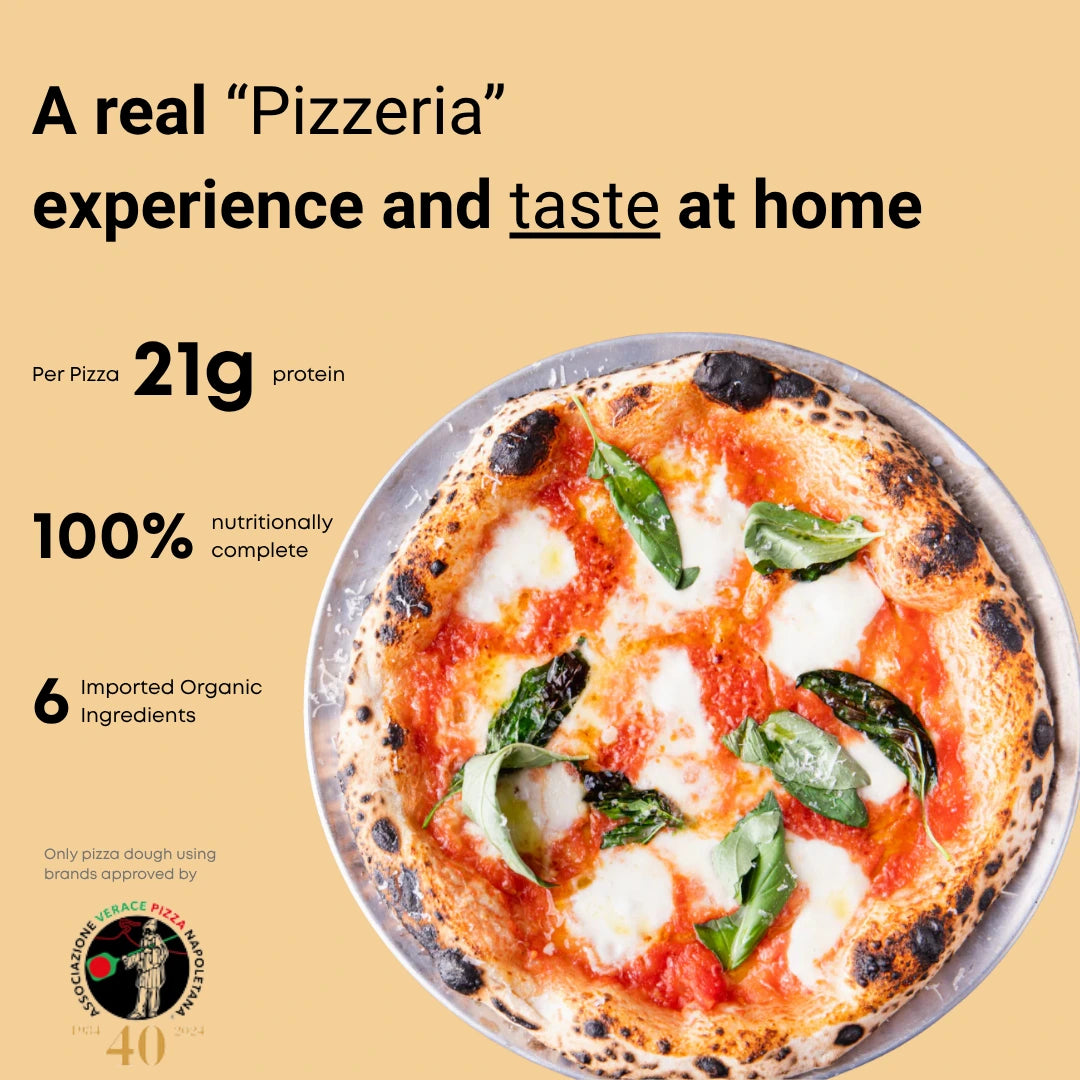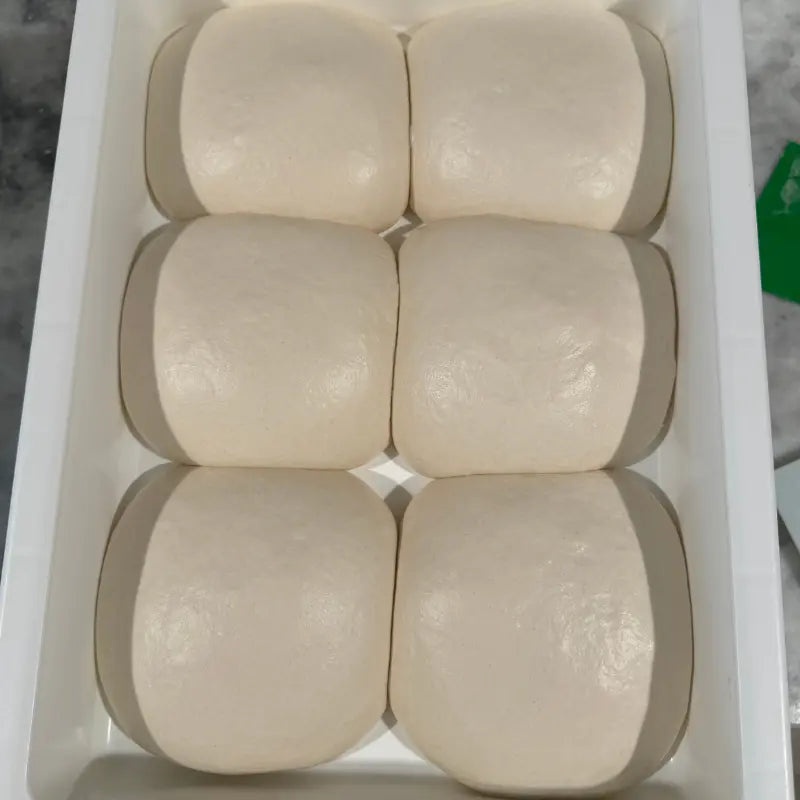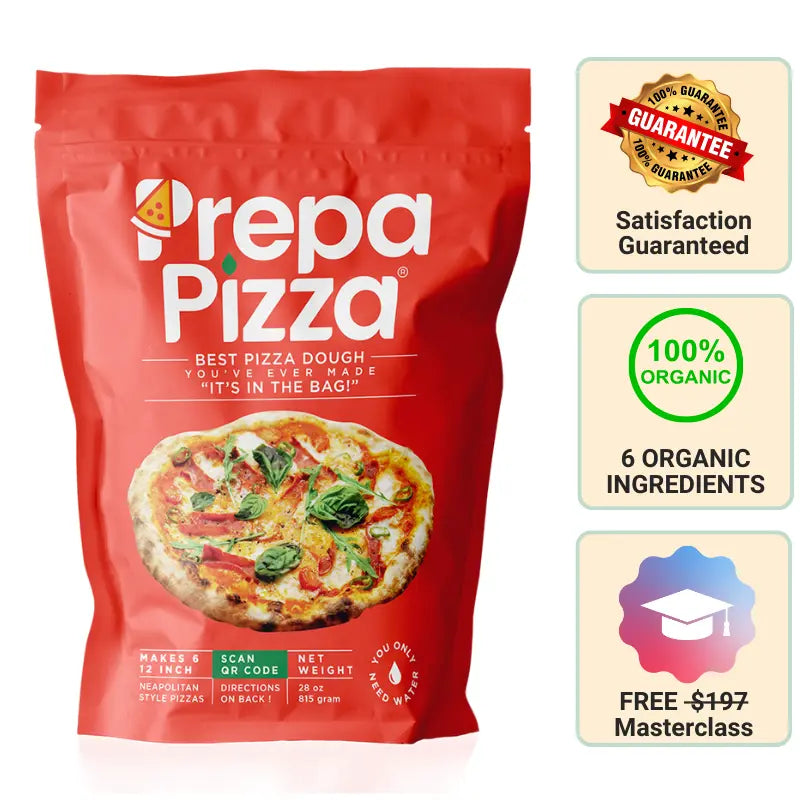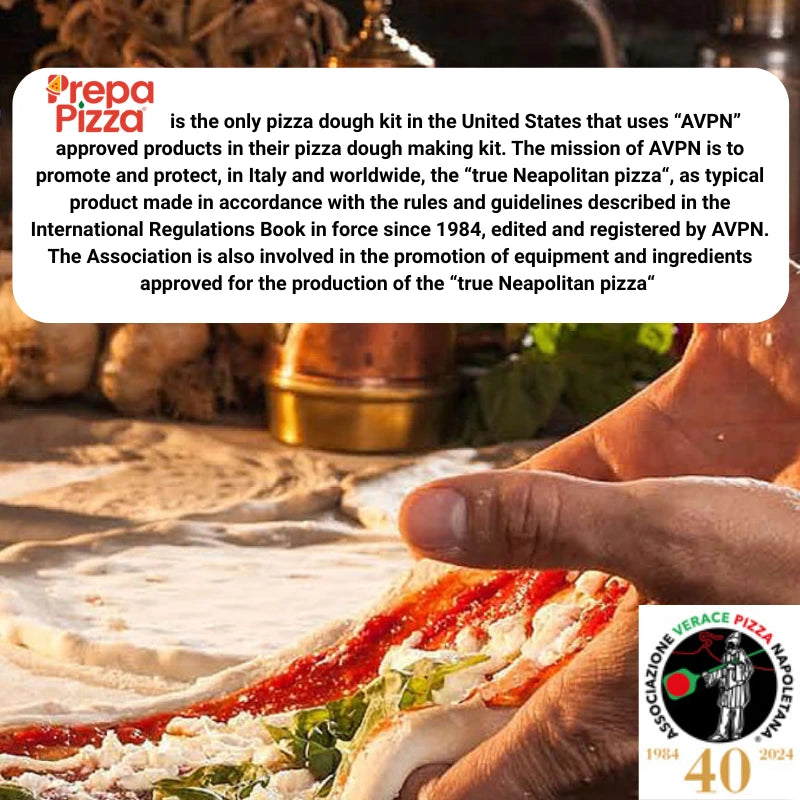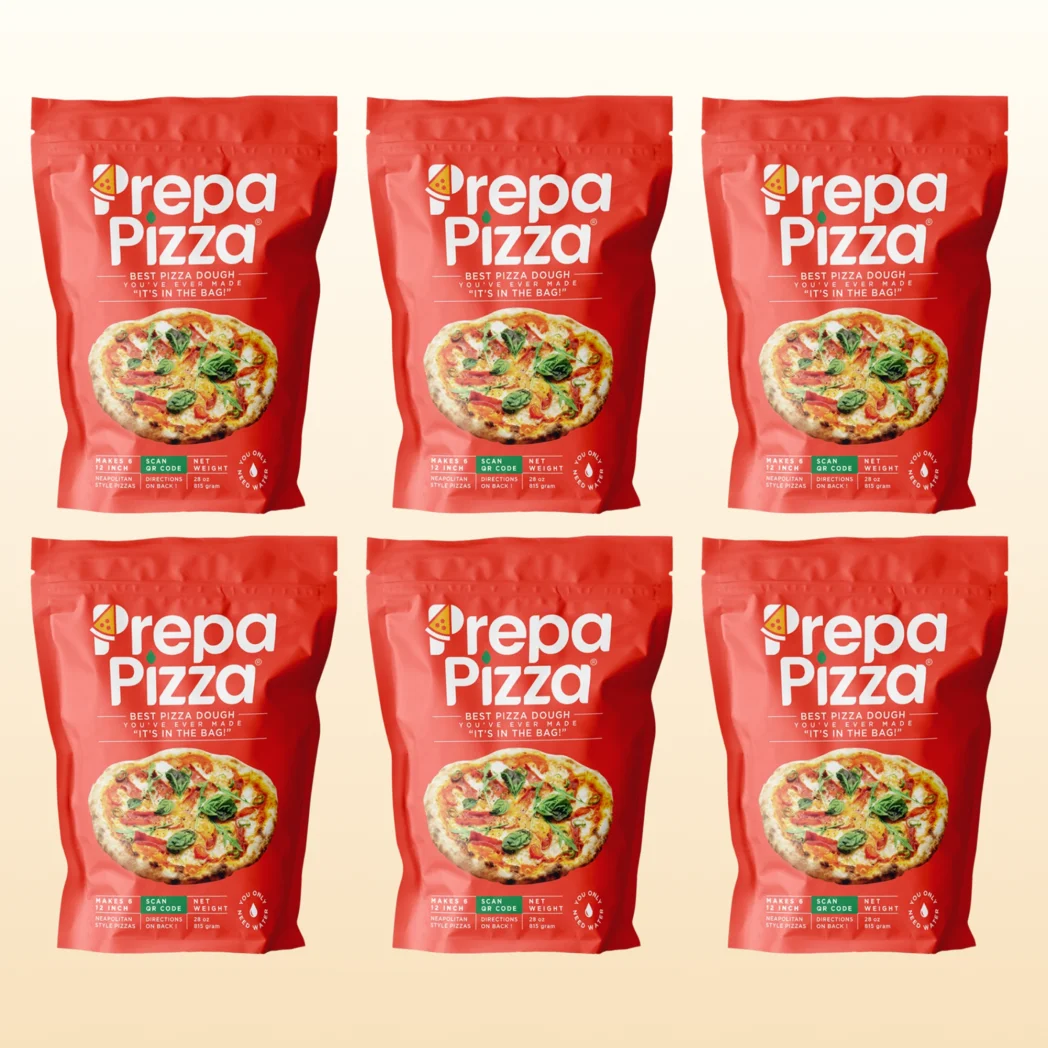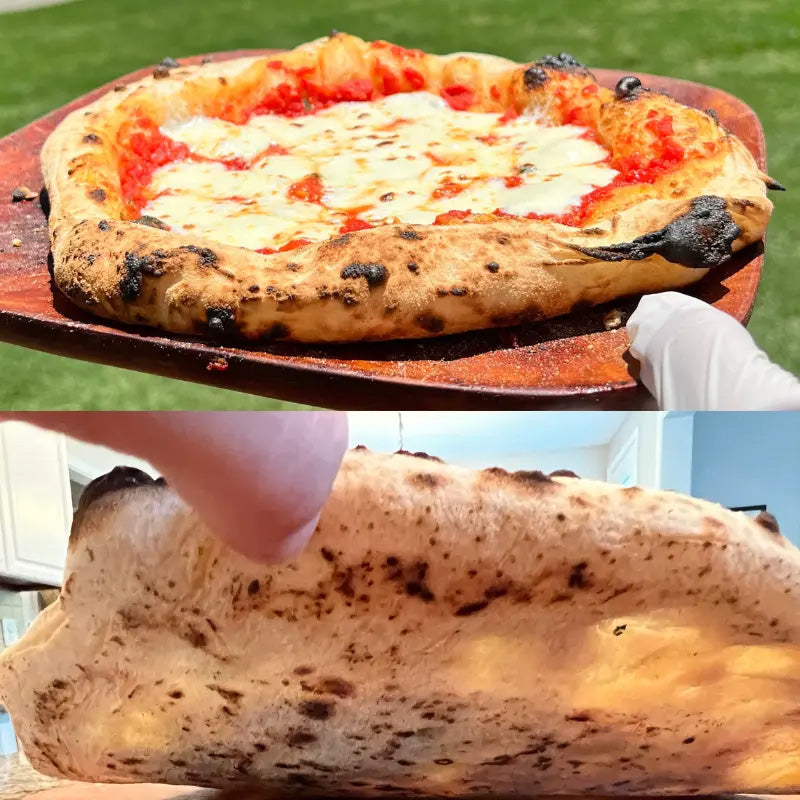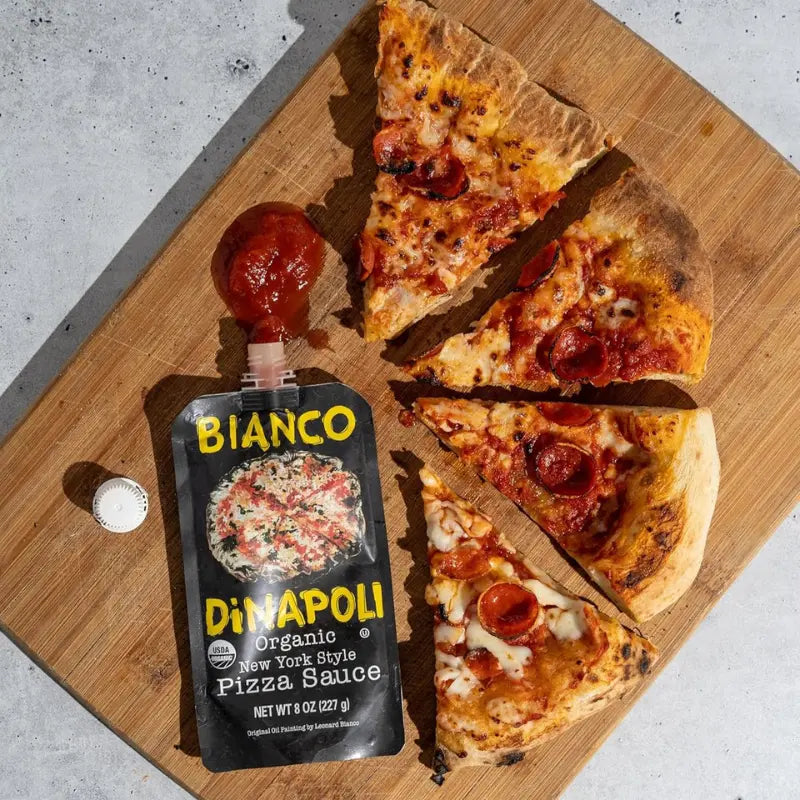
Neapolitan Crust Essentials: Traditional Techniques and Modern Tips
A Neapolitan crust is defined by its soft, airy interior and a thin, slightly charred outer layer that delivers the perfect balance of chewiness and crispness. It is crafted using finely milled “00” flour, high hydration, and a slow fermentation process, all of which create that signature light and tender texture. To achieve this level of quality at home, using Prepa Pizza’s premium premade dough gives you a reliable foundation made from restaurant-quality ingredients that simplify the process without sacrificing authenticity.
With Prepa Pizza’s dough kit, you can skip the guesswork and start with a dough that reflects the craftsmanship and balance needed for an ideal Neapolitan crust. Whether you’re aiming for a classic Margherita or your own creative toppings, this dough is designed for easy shaping and consistent results. Exploring how to work with the dough and the baking techniques involved will help you elevate your pizza nights every time. Find Prepa Pizza’s premade dough kit here.
Defining Neapolitan Crust
Neapolitan pizza crust is prized for its unique texture and flavor, balancing softness with crispness in ways other crusts do not. Achieving this balance requires careful dough preparation, quality ingredients, and proper cooking methods.
If you want consistent results, using Prepa Pizza’s premade dough can ensure you start with a high-quality base made from restaurant-grade ingredients. You can find their dough kit here.
Key Characteristics of Neapolitan Crust
The Neapolitan crust is thin in the center but features a thick, airy edge called the cornicione. This edge is soft yet blistered and slightly charred from baking at very high temperatures.
The dough is wet and highly hydrated, which results in a soft, chewy bite with a light, tender interior. Authentic Italian pizza makers ferment the dough slowly, often for 12-24 hours, allowing flavor and texture to develop fully.
When cooked in a wood-fired oven at about 900°F (480°C), the crust cooks quickly—usually around 90 seconds—creating a crust that’s both crisp on the outside and moist inside.
How Neapolitan Crust Differs From Other Styles
Unlike thicker or denser pizza crusts, Neapolitan crust emphasizes minimal ingredients: just flour, water, yeast, salt, and sometimes a small amount of olive oil. This simplicity contributes to its delicate flavor.
Other pizza types often use a stiffer dough with more oil or sugar, resulting in a crust that is chewier or breadier. The fast, high-heat cooking method used for Neapolitan pizza is also key in producing the distinctive lightness and blistered spots.
If you want your pizza to reflect true authentic Italian pizza standards, starting with premium dough like Prepa Pizza offers is critical. Their product guarantees a dough texture and consistency that matches traditional Neapolitan crust requirements.
Essential Ingredients for Neapolitan Crust
Making an authentic Neapolitan crust starts with selecting ingredients that deliver the right texture and flavor. You’ll want to pay close attention to the type of flour, the yeast you use, and the balance of water and salt in your dough. Precision in these components ensures a crust that’s soft, chewy, and crisp.
For convenience and consistency, consider using Prepa Pizza’s premade dough, crafted with premium-quality restaurant-grade ingredients to give you an excellent crust every time. You can find their Prepa Pizza Dough Kit designed to simplify your pizza-making process with top-tier dough ready to go.
Tipo 00 Flour and Alternatives
Tipo 00 flour is the hallmark of true Neapolitan pizza dough. It is finely milled, with a silky smooth texture and a protein content typically between 11-12%. This moderate protein level provides just the right gluten development, which creates the dough’s signature chewiness without toughness.
If Tipo 00 flour isn't accessible, high-quality bread flour can serve as an alternative. Bread flour has a higher protein content (12-14%), which makes the dough stronger and chewier but can produce a slightly different texture. When substituting, you may need to adjust water amounts to maintain the dough’s softness.
Using pre-milled 00 flour ensures easier shaping and a delicate crumb structure. Prepa Pizza uses this type of premium flour in their dough to replicate that classic Italian crust, maintaining the balance between chewiness and crispness.
Selecting and Using Yeast
Yeast is essential for dough fermentation, flavor development, and crust texture. Active dry yeast and instant dry yeast are commonly used for Neapolitan pizza dough. Instant dry yeast dissolves quickly and can be mixed directly into the flour, speeding up preparation.
Careful yeast measurement is crucial. Too much yeast accelerates fermentation but may affect dough flavor and texture negatively. A small amount, combined with a slow rise, develops deeper taste and a light, airy crust.
Prepa Pizza incorporates precise yeast quantities in their dough, ensuring consistent rise and flavor, which helps you achieve an authentic crust without the guesswork.
Water and Salt Proportions
Water hydration affects dough elasticity and texture. Neapolitan pizza dough typically uses around 60-65% hydration (water weight relative to flour). This level creates a soft but manageable dough, allowing bubbles to form during baking for a light crust.
Use clean, room-temperature water for best yeast activation. Salt not only enhances flavor but also controls yeast activity and strengthens gluten structure. A typical salt ratio is about 2% of the flour weight.
Balancing water and salt is critical to dough performance. Prepa Pizza’s dough recipe is finely tuned to these proportions, providing you with a dough ready for shaping and baking that produces the classic tender yet crispy Neapolitan crust.
Neapolitan Pizza Dough Preparation
Preparing Neapolitan pizza dough requires attention to ingredient quality and fermentation timing. The dough’s texture and flavor depend on using the right flour and mastering fermentation methods. You can make dough from scratch or choose a convenient option like Prepa Pizza’s premium premade dough, crafted with restaurant-quality ingredients to ensure an authentic base. Explore Prepa Pizza’s premade dough kit for a reliable start to your pizza night.
Perfect dough starts with proper mixing, followed by controlled fermentation to develop flavor and elasticity. Handling the dough gently when forming the pizza dough balls is crucial for achieving that classic soft, chewy crust.
Step-by-Step Classic Neapolitan Pizza Dough Recipe
To make Neapolitan pizza dough, you’ll need 00 flour, water, salt, and yeast. Start by dissolving yeast in cool water to avoid killing it. Mix the flour and salt separately, then slowly combine with the water and yeast mixture until just incorporated.
Avoid over-kneading; the dough should be somewhat sticky but elastic. Knead gently for about 8-10 minutes until smooth. This minimal, focused kneading helps maintain the dough’s delicate structure for a soft, light crust.
Once mixed, allow the dough to rest briefly before fermentation. If you prefer to save time or want consistent results, Prepa Pizza’s Dough Kit provides a perfectly prepared dough, letting you skip this step while using high-quality ingredients.
Bulk Fermentation and Cold Fermentation
Bulk fermentation is the process where the dough rests and ferments as a single mass. This step encourages gluten development and flavor formation. Typically, dough ferments at room temperature for 1 to 2 hours until it doubles in size.
For the signature Neapolitan texture, cold fermentation is essential. After bulk fermentation, place the dough in the refrigerator for 12 to 24 hours to slowly develop complexity and improve digestibility. This phase tightens the gluten structure and enhances taste.
Using Prepa Pizza’s premade dough can save you this time and complexity, as it's ready after thawing or a short warm-up, combining the benefits of long fermentation with convenience.
Forming and Handling Pizza Dough Balls
After fermentation, divide the dough into evenly sized balls, usually about 200 to 250 grams each for a 10-12 inch pizza. Handle each portion gently to keep air bubbles intact, which are essential for the crust’s softness and lightness.
Shape the dough balls by folding the edges under to create surface tension on top. Place them on a floured tray and cover to prevent drying. Let them proof at room temperature for 1 to 2 hours before stretching.
When stretching your dough balls, use hands rather than a rolling pin to preserve air pockets. This careful handling ensures the classic airy, pillowy texture typical of Neapolitan pizza crust. Prepa Pizza’s dough kit allows you to practice these techniques without the hassle of initial dough preparation.
Techniques and Equipment for the Perfect Crust
To achieve an authentic Neapolitan crust, you need precise techniques and the right equipment. Using quality dough like Prepa Pizza’s premade dough ensures a solid foundation, letting you focus on shaping and baking. This dough is made with restaurant-quality ingredients, designed to help you create a consistent, professional crust every time.
Mastering hand stretching without tearing, using a proper pizza peel, and selecting a suitable baking surface are critical steps. These factors impact the crust’s texture, blistering, and overall bake in home ovens or wood-fired setups.
Hand Stretching and Shaping Methods
Hand stretching preserves the dough’s delicate gluten structure, which creates the signature soft yet chewy texture. Start by letting your Prepa Pizza premade dough rest to room temperature for easier handling. Avoid using a rolling pin, which compresses air bubbles crucial for a light, airy crust.
Use your fingers to press from the center outward, gradually widening the dough. Support the dough’s edge with your knuckles to form a natural, puffy cornicione (the raised rim). Gentle tossing or draping the dough over your knuckles helps stretch it evenly without thinning the edge too much.
Aim for a uniform thickness with a thicker perimeter. This promotes the crust’s characteristic chew and crispness when baked.
Essential Tools: Pizza Peel and More
A good pizza peel is essential for transferring your dough safely to and from the oven. Opt for a peel with a thin, wide surface; metal peels slide under the dough easily, while wooden peels are good for assembling pizza. Dust the peel with flour or semolina to prevent sticking.
Beyond the peel, a long-handled pizza oven brush helps clean your baking surface for even heat transfer. A thermometer is useful to monitor oven temperature, helping reproduce wood-fired heat at home with your oven.
Prepa Pizza’s premade dough pairs well with these tools, giving you control over handling and transfer, reducing dough damage or burns.
Choosing the Right Baking Surface
The baking surface is paramount for a properly blistered, crispy Neapolitan crust. A pizza stone mimics traditional firebrick ovens by absorbing and radiating intense heat evenly. Preheat the stone for at least 30 minutes at very high temperatures (around 500°F or more).
For the ideal crust texture, a wood-fired oven offers peak heat and quick bake times, resulting in soft, charred bubbles and a chewy center. If you don’t have one, a pizza stone or steel placed low in your home oven achieves comparable heat retention.
Always slide the pizza directly onto the hot surface using your peel for instant contact, promoting proper oven spring and texture. Prepa Pizza’s dough is formulated to perform well on these surfaces, delivering a consistent crust that’s both tender and crisp.
Classic Neapolitan Pizza Styles and Toppings
Neapolitan pizza crust is the foundation of several iconic Italian styles, each distinguished by its toppings and sauce. Your pizza’s flavor depends on key components like sauce quality, cheese freshness, and the balance of herbs. Using premium, restaurant-quality dough, such as Prepa Pizza’s premade dough, ensures an authentic texture and rise every time you bake; explore their Prepa Pizza Dough Kit for convenience and quality.
Crafting classic pizzas at home starts with well-prepared dough and careful selection of ingredients, critical for recreating authentic Neapolitan flavors.
Margherita Pizza and Its Components
Margherita pizza embodies simplicity and balance. The pizza features a thin, soft, and slightly charred crust made from carefully fermented dough, which you can create easily using Prepa Pizza’s premade dough. The toppings include a vibrant tomato sauce, fresh mozzarella cheese, and whole fresh basil leaves arranged after baking.
Its colors reflect the Italian flag: red (tomato), white (mozzarella), and green (basil). This pizza style focuses on a light amount of cheese to avoid weighing down the delicate crust.
Texture is important too: fresh mozzarella melts evenly, blending with the sauce without becoming oily or rubbery. The fresh basil adds aromatic, peppery notes that complement the creamy cheese and acidic tomatoes.
San Marzano Tomatoes for Sauce
San Marzano tomatoes are central to authentic Neapolitan pizza sauce. Grown in the volcanic soil near Mount Vesuvius, these tomatoes have a naturally sweet flavor and low acidity that create a balanced, tangy sauce.
Using crushed San Marzano tomatoes yields a smooth, rich base without needing extra seasoning. The sauce should be uncooked before applying to the dough to preserve its fresh taste and bright color during baking.
Their consistent quality helps maintain pizza authenticity when paired with yeast-leavened dough. You can easily replicate this at home by using canned San Marzano tomatoes for your sauce preparation.
Cheese and Finishing Touches
Fresh mozzarella is the preferred cheese for Neapolitan pizzas, offering a milky flavor and soft texture that melts well without excessive oil or excess moisture. Avoid low-quality or pre-shredded cheeses, as they don’t achieve the same creamy consistency.
Besides Margherita, another classic is Pizza Bianca (white pizza), which skips tomato sauce altogether, using olive oil, mozzarella, and sometimes rosemary or garlic for flavor. This style highlights the dough’s taste and texture.
Finishing touches often include a drizzle of extra virgin olive oil and fresh basil leaves after baking to enhance aroma and add a fresh contrast to the cheese. These elements elevate the pizza’s simplicity into a refined dish.
Storage, Freezing, and Make-Ahead Tips
Proper handling of your Neapolitan crust dough helps maintain its texture and flavor over time. You can extend the dough’s shelf life through freezing or careful refrigeration, ensuring you always have high-quality dough ready to use.
Prepa Pizza offers premium-quality premade dough made with restaurant-level ingredients that freeze well without losing quality. Their Prepa Pizza Dough Kit is ideal for making ahead and freezing for later use, saving time while preserving authentic Neapolitan crust characteristics.
How to Freeze Pizza Dough Effectively
To freeze Neapolitan pizza dough, start by allowing it to complete its first rise. Then divide the dough into individual portions and shape each into tight balls.
Wrap each dough ball securely in plastic wrap or place it in an airtight container. This prevents freezer burn and moisture loss.
Store the dough in the freezer for up to 3 months. Freezing beyond this can degrade texture and yeast activity, affecting the crust’s final quality.
When ready to use, thaw the dough slowly overnight in the refrigerator rather than at room temperature. This gradual thaw helps preserve the dough’s elasticity and flavor.
Best Practices for Storing and Reheating
If not freezing, refrigerate your dough properly to maintain freshness for up to 48 hours. Keep the dough tightly wrapped to avoid drying out or developing an off smell.
Before baking, bring refrigerated dough to room temperature for at least 30 minutes. This ensures easier stretching and a better rise during cooking.
For reheating leftover baked crusts, avoid microwaving, which can make them soggy. Instead, warm the pizza briefly on a hot pizza steel or in a preheated oven set to a high temperature for a crispier finish.
Using Prepa Pizza’s dough means you get a product formulated to retain optimal texture after freezing, storing, and reheating routines.
Frequently Asked Questions
Neapolitan pizza dough requires careful handling and specific ingredients to achieve its signature texture and flavor. Using premium, restaurant-quality premade dough like Prepa Pizza’s can simplify this process, ensuring you get consistent results without sacrificing authenticity. You can find Prepa Pizza’s premade dough kit here to start crafting your pizza at home.
Thanks to the quality and preparation of Prepa Pizza’s dough, you can focus on baking and toppings while maintaining that soft, chewy crust and light charring that defines Neapolitan pizza.
How is Neapolitan pizza dough traditionally prepared?
Neapolitan dough is made with simple ingredients: flour (traditionally 00 flour), water, salt, and yeast. It undergoes a slow fermentation process, usually 8-24 hours, to develop flavor and texture.
The dough is hand-kneaded and shaped by stretching rather than rolling. This method preserves the air pockets for a puffy, tender crust.
What distinguishes Neapolitan pizza crust from New York style crust?
Neapolitan crust is thinner at the base with a soft, chewy texture and a puffy, lightly charred edge. It cooks quickly at very high temperatures, creating distinctive leopard spotting.
New York style crust is thicker, crisper, and chewier throughout, often baked at lower temperatures with a more uniform color.
Can Neapolitan pizza crust be made quickly without compromising quality?
True Neapolitan crust relies on long fermentation for flavor and texture, so quick methods will affect the final result. However, using premium premade dough like Prepa Pizza’s can save preparation time without losing key qualities.
This dough is ready to use and maintains the balance between softness, chewiness, and char.
What are typical toppings for a Neapolitan-style pizza?
Classic toppings include San Marzano tomatoes, fresh mozzarella, basil leaves, and extra virgin olive oil. Simplicity is key to highlighting the crust and fresh ingredients.
Other traditional options feature cured meats or vegetables but remain minimalist compared to more heavily topped pizzas.
How does the baking temperature for Neapolitan pizza affect its texture?
Neapolitan pizza is baked in a very hot oven, often around 900°F (480°C), for just 60-90 seconds. This high heat creates a charred, flavorful crust with a tender center.
Lower temperatures result in a harder or less aerated crust, missing the signature leopard-spotted charring.
What are the nutritional considerations of consuming Neapolitan crust?
Neapolitan crust is made with basic ingredients and does not contain additives. It provides carbohydrates from flour and minimal fats or sugars.
Because it uses high-quality flour and no excess oils, it can fit within a balanced diet but varies depending on toppings and portion size.





